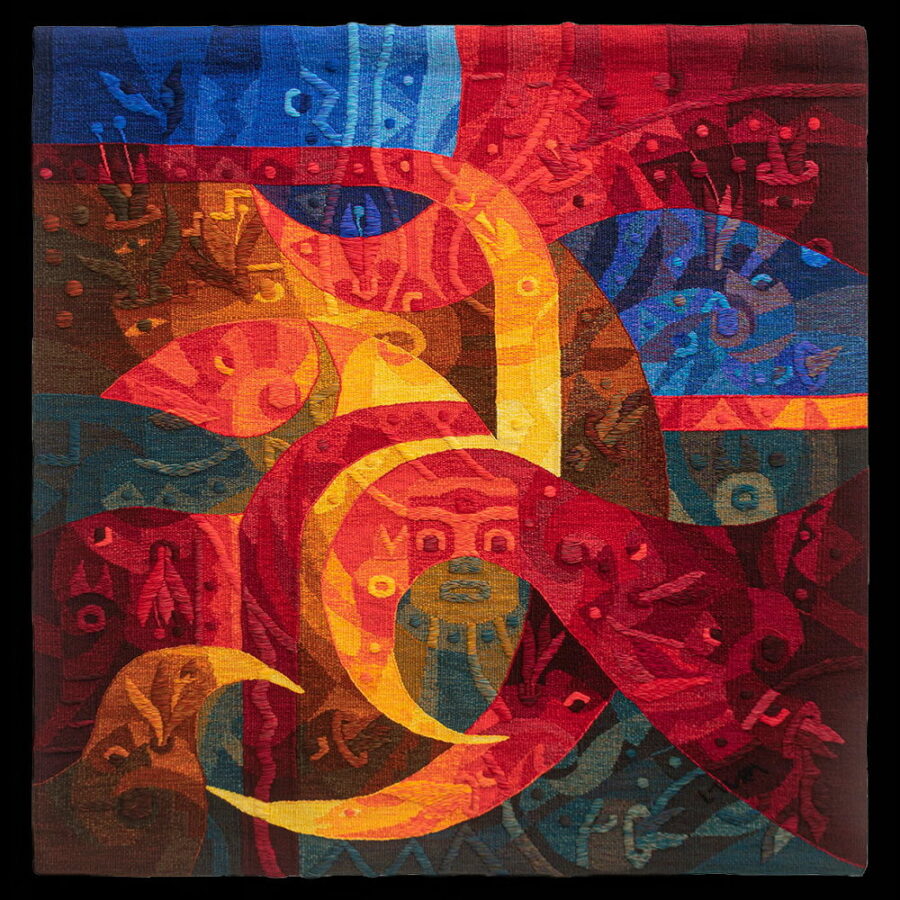Peru, a land of breathtaking geographical and historical complexity, is far more than just the majestic backdrop of Machu Picchu. It is a crucible of cultures, its artistic veins stretching from the snow-capped Andean peaks across arid coastal deserts to the depths of the Amazon rainforest. Peruvian art, as multifaceted as the country itself, is a vibrant dialogue between millennia-old traditions and pulsating contemporary creativity. This article takes you on a journey through a diverse artistic landscape, from the mysterious geoglyphs of Nazca culture to the provocative installations of today’s artists in urban centers. Peru’s art history, as a Peruvian artist might put it, is an infinitely woven quipu, its knots telling stories of empires, conquests, resistance, and inexhaustible reinvention.
Peruvian cultural identity is not monolithic but the result of continuous superimpositions and fusions a cultural palimpsest. This process is not a closed historical event but an ongoing dynamic that continues to shape Peruvian art, demonstrating its remarkable resilience and adaptability. It is not merely an addition of elements but a true synthesis that produces something new and unique. Interwoven with this is the country’s political and social history, inextricably linked to its artistic development; artistic movements often mirror societal upheavals and the profound search for national identity.

The Immortal Heritage: Pre-Columbian Art Worlds
Peru’s artistic roots delve deep into a time before European arrival, where an impressive succession of high cultures flourished, each producing unique and highly developed art forms. This pre-Columbian art was not merely aesthetic but deeply embedded in religious, social, and political systems, serving to communicate with gods, mark status, and record history and myths.
The Chavín culture (c. 900-200 BCE), one of South America’s oldest high cultures, exerted influence throughout the Andean region. Its complex iconography, masterfully carved in stone as seen in the famous Lanzón Stela or the Raimondi Stela, often depicts fearsome deities with features of predators like jaguars and caimans, alongside strictly symmetrical patterns. This art was a medium for conveying profound cosmological concepts and religious power.
Almost concurrently, the Paracas culture (c. 900-200 BCE) developed on Peru’s southern coast, renowned for its extraordinarily well-preserved and elaborately decorated textiles, among the finest and most technically sophisticated in the Americas. These fabrics, often made for mummy bundles and brightly embroidered with complex motifs of mythical beings and ritual scenes, attest to technical mastery and a deep connection to ancestor worship and complex afterlife beliefs. Paracas culture also left significant ceramics and early gold objects.
World-famous are the remnants of the Nazca culture (c. 200 BCE-600 CE), especially the enormous geoglyphs known as the Nazca Lines. Etched into the desert floor, these figures of animals (hummingbirds, monkeys, spiders, orcas) and geometric patterns are often fully visible only from the air and remain enigmatic. Their creation (likely between 500 BCE and 500 CE) and meaning, whether religious, astronomical, or ritual are subjects of intense research. Recent discoveries, aided by artificial intelligence, have revealed hundreds more, often older and smaller geoglyphs, including depictions of armed orcas serving human heads, a motif also found on Nazca ceramics, suggesting complex ritual practices. Beyond these monumental landscape artworks, Nazca culture is known for its colorful, highly symbolic ceramic painting.
On Peru’s north coast, the Moche culture (c. 100-800 CE) unfolded, celebrated for its astonishing naturalism in ceramics. Their portrait vessels, often faithfully rendering individual features of rulers or important figures, are unique in pre-Columbian art. Moche ceramics depict a broad spectrum of human life, from everyday scenes and ritual acts to a remarkable variety of erotic representations, possibly linked to fertility rites. Their impressive adobe pyramids, like the heavily eroded Huaca del Sol, testify to complex societal organization, despite later destruction by the Spanish.
Finally, pre-Columbian artistic development reached an imperial zenith with the Inca culture (13th-16th century). The Incas are renowned for their impressive architecture and masterful stonework, visible in sites like Machu Picchu and Sacsayhuamán, characterized by trapezoidal doors and niches. Even more significant, however, were textiles, which served as status symbols, currency, and important offerings. The finest fabrics, known as “qompi,” made from vicuña or alpaca wool, were valued more highly than gold or silver. Colors in Inca textiles held deep symbolic meaning: red for victory and rule, green for the rainforest and fertility, while violet, the most prized color, was associated with the primordial mother, Mama Ocllo. Weaving, often on backstrap looms, built upon millennia-old traditions. Ceramics and metalwork, especially gold (linked to the sun and the Inca emperor), also reached high artistry.

In the Crucible of Conquest: Colonial-Era Art
The arrival of Spanish conquistadors in the 16th century marked a profound rupture in Peruvian art history. It introduced new artistic techniques like oil painting, European styles such as Mannerism and Baroque, and, crucially, a new religious iconography primarily for evangelizing the indigenous population. From this encounter, a unique hybrid style emerged, notably in the Cusco School (Escuela Cuzqueña).
Developing in the late 16th century, the Cusco School became a center where European artists taught indigenous and mestizo painters new techniques and prescribed motifs. However, the students subtly wove traditional Andean elements into religious depictions. Paintings feature native animals Marcos Zapata’s “Last Supper” (c. 1753) in Cusco Cathedral famously includes a guinea pig, local plants, traditional clothing, and even portraits of Inca nobility. The Cusco School style is also characterized by vibrant colors, a penchant for detail, and often a flatter perspective, lending the works a distinct aesthetic. This colonial art was a complex negotiation between dominant European culture and resilient indigenous traditions.
Prominent artists of this era include Diego Quispe Tito (1611–c. 1681), a leading Cusco School painter from an Inca noble family, whose works often feature birds (possibly referencing Inca nobility) and emphasize landscapes. Other key figures were Basilio Santa Cruz Pumacallao (1635–1710), also of indigenous origin but adhering more closely to Western Baroque canons, and the prolific Marcos Zapata (c. 1710–1773). Many Cusco School works remained unsigned, possibly reflecting pre-Columbian traditions of art as a communal endeavor, contrasting with European emphasis on individual genius.

The Quest for the Peruvian Soul: Indigenismo and Its Reflections
In the early 20th century, Peru, like other Latin American nations, saw the rise of Indigenismo, a cultural and political movement aimed at revaluing indigenous cultures and their role in national identity, often as a reaction to centuries of marginalization. Influential thinker José Carlos Mariátegui stated, “The new Peruvianness is something to be created. Its historical foundation must be indigenous.”
Francisco Laso (1823–1869) is considered a precursor, his famous painting “The Inhabitant of the Cordilleras” being an early construction of the “Indian” as a national symbol. The artistic peak of Indigenismo in Peru was in the 1920s and 1930s, with José Sabogal (1888–1956) as its leading figure. Sabogal and his followers, including Julia Codesido and Enrique Camino Brent, sought to explore and glorify Peru’s cultural identity by depicting indigenous themes, Andean rural life, and traditional customs. Their works, often idealized, also carried social critiques of indigenous exploitation.
Another important artist, Camilo Blas (Alfonso Sánchez Urteaga), according to recent analyses, pursued a “Peruvianist” project, updating the indigenous figure within contemporary Mestizo society rather than an idealized Inca-era depiction. Indigenismo was, however, ambivalent. While a step towards recognizing indigenous cultures, it was often shaped by a non-indigenous perspective that sometimes objectified the “Indian” for national narratives. Critics like Natalia Majluf note that Indigenismo was “more an autochthonism full of anxieties,” an attempt by the Creole elite to insert Peru into universal culture. Despite its decline as a movement by the 1950s, the engagement with indigenous identities remains a vital theme in contemporary Peruvian art, often critically re-examining historical representations towards more self-determined articulation by contemporary indigenous artists themselves.

Modern Impulses and Avant-Garde: Art in 20th-Century Transformation
The mid-20th century marked a significant shift in Peruvian art, driven by a desire to break free from academicism and folkloric themes. Influenced by international avant-garde movements, artists explored abstraction, conceptual art, and performance art. Fernando de Szyszlo (1925-2017) was a pioneer, considered one of Latin America’s foremost 20th-century artists. His powerful abstract paintings and sculptures, often vibrant and inspired by geometric forms and pre-Columbian motifs, radically broke with the prevailing figurative tradition. His 1951 exhibition sparked the first major public debate on non-figurative art in Peru.
Other key figures included Jorge Eduardo Eielson (1926-2006), a poet, painter, and playwright known for formal experiments and social critique. Teresa Burga (1935-2021) was a pioneer of Latin American conceptualism, her diverse practice spanning drawing, painting, sculpture, multimedia installations, and data-based experimental research. She was part of “Arte Nuevo” (1966-1967), an avant-garde collective that championed Pop Art, Op Art, happenings, and installations, critically positioning itself against official art institutions. The Peruvian avant-garde was not mere imitation but an active transformation of Western influences.
During the Velasco dictatorship (1968-1975), while certain aesthetics were instrumentalized for propaganda, critical counter-movements also arose. Jesús Ruiz Durand, working for the military government’s information system SINAMOS, designed revolutionary Pop Art-style propaganda posters, creating the iconic, simplified image of Inca rebel leader Túpac Amaru II, which became a symbol of agrarian reform. His style was dubbed “achorado” (Peruvian slang for bold, challenging). From this context emerged the E.P.S. Huayco artist group in the late 1970s and early 1980s, and the associated “Pop Achorado” style.
This movement used a “cheeky” pop style to depict social realities and the new urban culture shaped by migration, often using ephemeral, everyday materials. A famous example is their project around the folk saint “Sarita Colonia,” whose image they placed on an installation of empty milk cans. Parallel to this, “Cultura Chicha” emerged, a cultural phenomenon blending Andean migrant culture with urban and tropical influences, manifest in its own music, distinctive graphic design (like the bright concert posters popularized by artists such as Elliot Tupac), and an aesthetic often perceived as garish but representing an important form of urban identity and social hybridity.

The Vibrant Present: Peru’s Contemporary Art Scene
Peru’s contemporary art scene is dynamic and diverse, gaining international recognition. It engages in a continuous dialogue with its rich history while addressing globally relevant themes. As art historian Natalia Majluf describes, “Today we have an artistic field in full effervescence, increasingly diverse, broad, and complex, with compelling works.” This plurality is evident in the range of artistic languages from painting and sculpture to photography, textile art, conceptual art, performance, and digital media. Key contemporary artists include:
- Teresa Burga (1935-2021), whose innovative use of Andean textiles to explore gender and collective memory remains highly relevant.
- Sandra Gamarra, an internationally known conceptual artist using everyday objects to reflect on history and the human condition.
- Fernando Bryce, known for his “mimetic analysis,” meticulously hand-copying historical documents to question power structures. Younger generations bring fresh perspectives:
- Salima Black paints surreal, anime-inspired images, addressing the Peruvian art market and social media.
- Self-taught Rafael Pascuale Zamora, inspired by old masters, combines Baroque style with modern surrealism, emphasizing figurative work in Peru.
- Sculptor and painter Rafael Lanfranco is known for playful characters and “universes” like the “Wakoverse,” blending pop culture, mythology, and Peruvian identity. Renowned photographers like Mario Testino (fashion) and Rodrigo Otero Heraud (experimental “photo geographies”) also make significant contributions. A common thread is the critical engagement with history and cultural identity. Social and political conflicts, including the aftermath of terrorism and inequality, are also addressed, as seen in the work of Walter Gutiérrez or Doris Salcedo. Environmental issues, gender, and decolonial perspectives are increasingly prominent. Particularly noteworthy is contemporary Amazonian art, considered one of the most important phenomena in 21st-century Peruvian art. Artists like Chonon Bensho (Shipibo-Conibo), Santiago Yahuarcani (Uitoto), Sara Flores (Shipibo-Conibo), Olinda Silvano (Shipibo-Conibo), Roldán Pinedo (Shoyan Shëca) (Shipibo), and Brus Rubio (Bora/Murui) are pivotal voices. Their art is deeply rooted in the cosmology, myths, and spiritual connection to nature of their peoples. They address medicinal plants like Ayahuasca, critique environmental destruction, and fight for cultural identity and resistance. Roldán Pinedo says of his inspiration, “My world is there, it always gives me hope to remember. When I draw, I concentrate, and it seems as if I were in the jungle, in a world of our own.”

Epicenters of Creativity: Museums, Galleries, and Urban Art Havens
Peru’s art scene thrives in various centers, with Lima leading, but historic cities like Cusco and emerging metropolises like Arequipa also contribute significantly.
Lima: The Pulsating Heart of Art
- Museums: The Museo de Arte de Lima (MALI) is the country’s premier art institution, housing over 17,000 objects spanning 3,000 years of Peruvian art. The Museo Larco, in an 18th-century mansion, holds the world’s largest private collection of pre-Columbian art (over 45,000 ceramic pieces), famous for its erotic pottery gallery and gold collections. The Museo de Arte Contemporáneo (MAC Lima) in Barranco promotes contemporary art practices. Other important museums include the Museo Pedro de Osma (colonial art), Museo Amano (textiles), and the Museo Nacional de Arqueología, Antropología e Historia del Perú.
- Galleries: Lima boasts a vibrant gallery scene. Galería Lucía de la Puente is a key venue. Revolver Galería focuses on experimental art. Wu Galería promotes Peruvian artists internationally. Others include Enlace Arte Contemporáneo, Ginsberg + Tzu, and 80m2 Livia Benavides.
- Creative Districts: Barranco is Lima’s artistic heart, with a bohemian atmosphere, colonial architecture, galleries (including MAC Lima and MATE – Museo Mario Testino), and street art. Miraflores also offers cultural attractions like the Parque del Amor and the Huaca Pucllana archaeological site.
Cusco: Historic Heritage and Living Traditions
- Museums: The Museo de Arte Precolombino, in a former Inca ceremonial courthouse in San Blas, displays outstanding pre-Columbian artworks. The Museo Machupicchu-Casa Concha presents artifacts from the famous Inca city.
- Crafts and Tradition: The Santuranticuy Christmas market (December 24th) on Plaza Mayor features artisans selling nativity figures, especially the “Niño Manuelito.” The Centro de Textiles Tradicionales del Cusco (CTTC) supports weaving communities, reviving ancient techniques.
Arequipa and Other Regions: Growing Art Centers Arequipa, the “White City,” hosts the Museo de Arte Contemporáneo de Arequipa (MAC Arequipa), preserving the region’s artistic heritage from 1900, including the photography of the Vargas brothers. The Museo de Arte Virreinal de Santa Teresa, in a historic Carmelite monastery, holds Peru’s oldest collection of 16th-19th century art.
Alternative Art Spaces and Initiatives Artist collectives like Color Energía in Lima’s Rímac district transform public spaces with murals addressing identity and multiculturalism through their “Proyecto Arcoíris.” Espacios Revelados Lima revives forgotten city sites through artistic interventions. Dédalo Arte y Artesanía in Barranco bridges contemporary art and traditional crafts.

Promotion and Preservation: Cultural Institutions and Initiatives
Peru’s art scene is supported by a network of state institutions, private initiatives, and independent actors. The Ministerio de Cultura (Ministry of Culture) plays a central role, with its Política Nacional de Cultura al 2030 aiming to strengthen cultural diversity, participation, and heritage protection. Programs like Estímulos Económicos para la Cultura provide funding for cultural projects. The Biblioteca Nacional del Perú (BNP) preserves the nation’s documentary heritage. Art fairs like Pinta Lima (formerly PArC) and Art Lima are crucial for the contemporary art market. The Feria Artmotiv promotes direct interaction between artists and buyers. Independent collectives and organizations like the Goethe-Institut and CTTC also play vital roles. Despite these efforts, challenges in sustainable funding and decentralization persist.
Closing Thoughts: The Inexhaustible Soul of Peru
The journey through Peru’s art and culture scene reveals a land of inexhaustible creative energy. From pre-Columbian enigmas and colonial hybrid beauty to Indigenismos identity quests, modernism’s bold experiments, and contemporary art’s vibrant diversity, Peru is a cultural mosaic constantly generating new forms and meanings. Peruvian art is characterized by resilience and transformation, often using historical upheavals as creative impulses. A key feature is the dialogue between the local and the global; artists engage with international trends while remaining deeply rooted in their cultural reality.
The importance of art for Peruvian identity is immense, not as a static construct but as an ongoing dialogue. As Natalia Majluf notes, “Today we have an artistic field in full effervescence,” and musician Gisella Giurfa emphasizes, “…without art, there is no culture, and we have no identity.” Peru’s “inexhaustible soul,” manifested in its art, lies in its capacity to integrate diversity, reinterpret traditions, and ceaselessly evolve. It is an art rooted in the past yet boldly and critically facing the future.
#Peru #PeruvianArt #PreColumbianArt #ColonialArtPeru #CuscoSchool #Indigenismo #ModernPeruvianArt #ContemporaryPeruvianArt #AmazonianArt #LimaArtScene #CuscoArt #MachuPicchu #NazcaLines #TextileArt #CulturalHeritage #SouthAmericanArt









